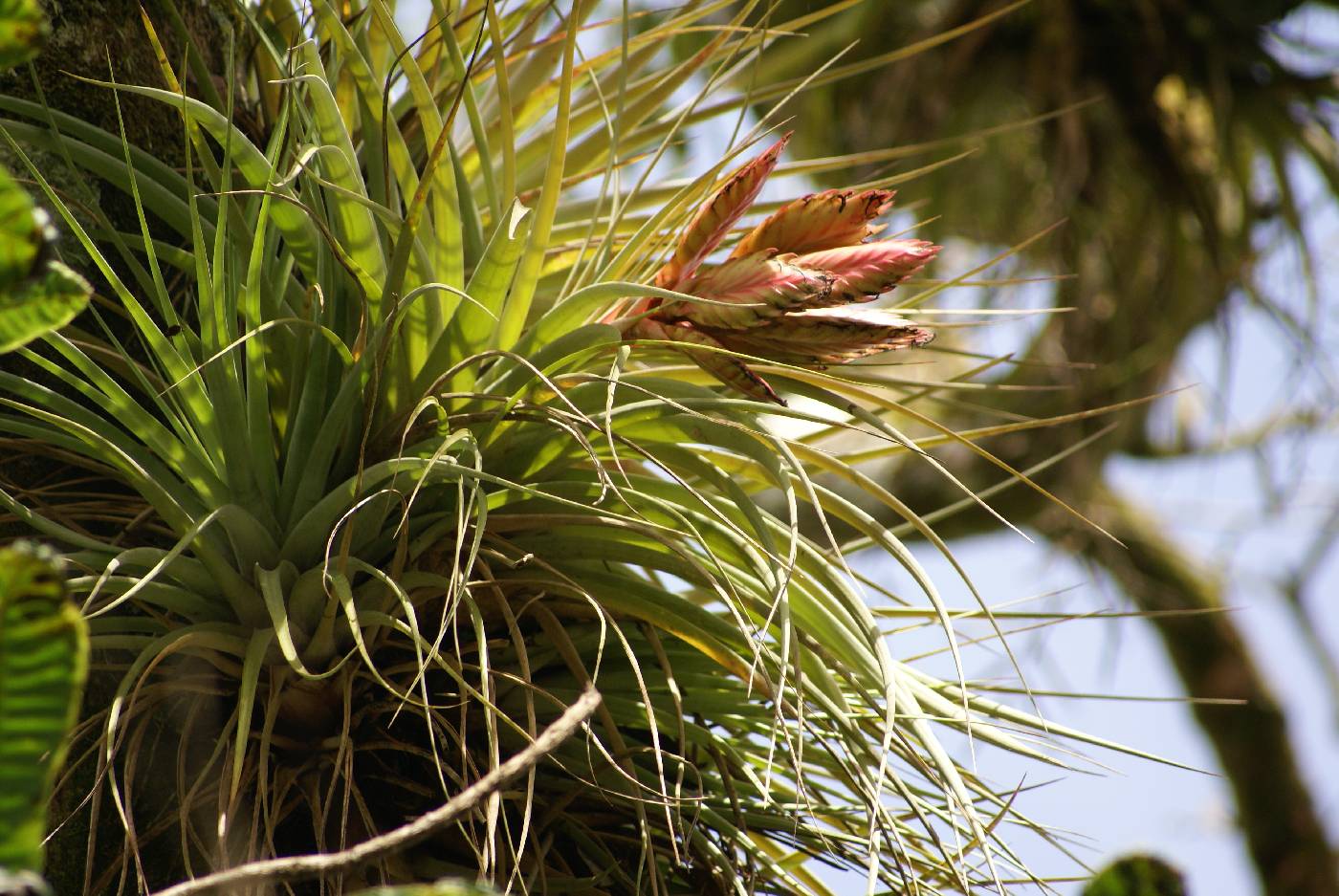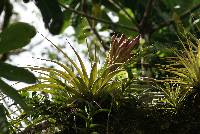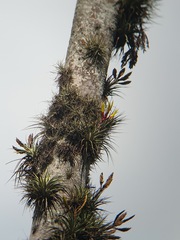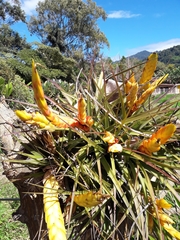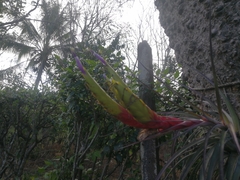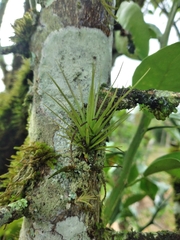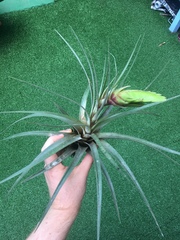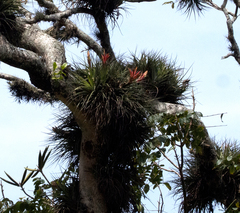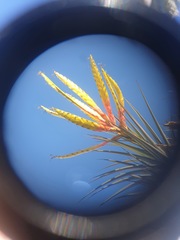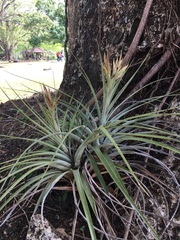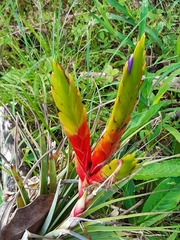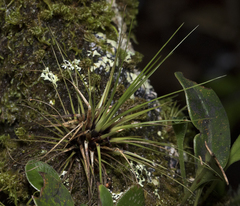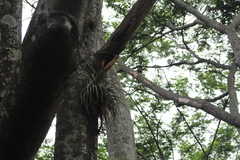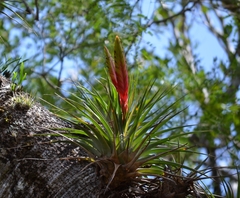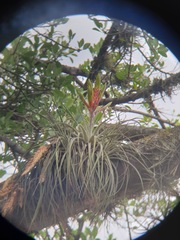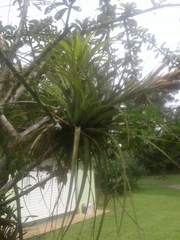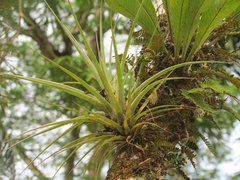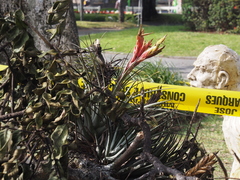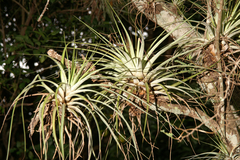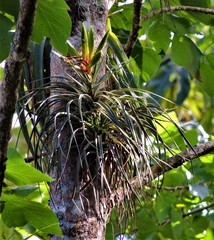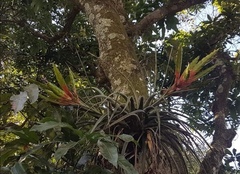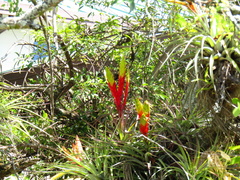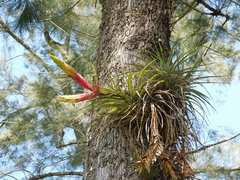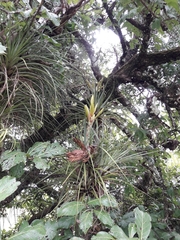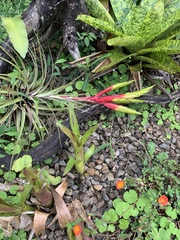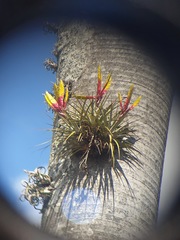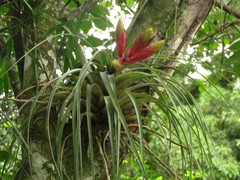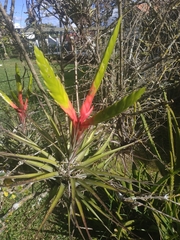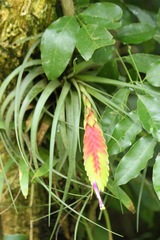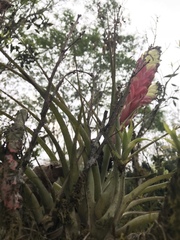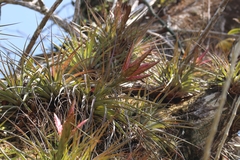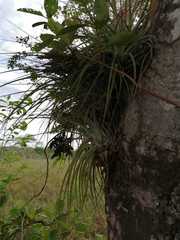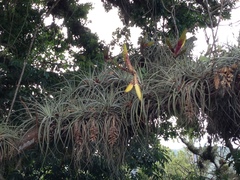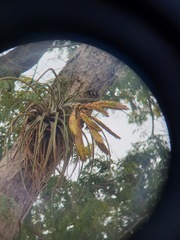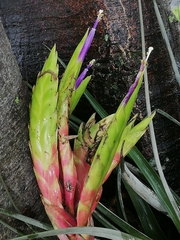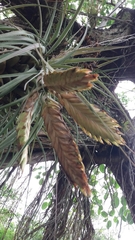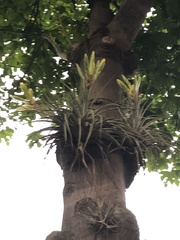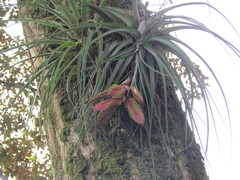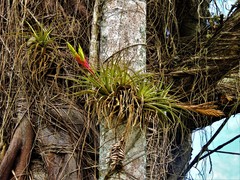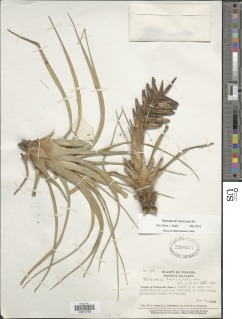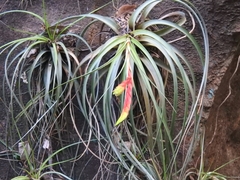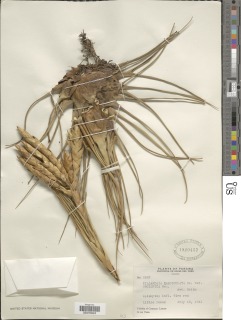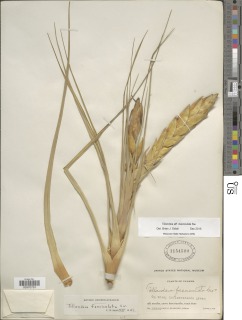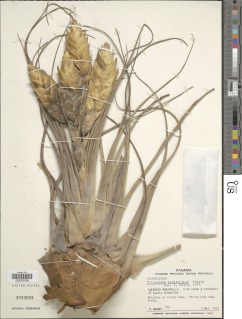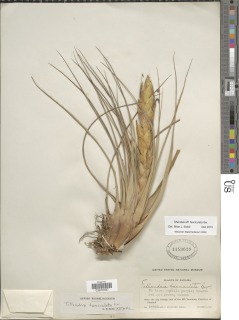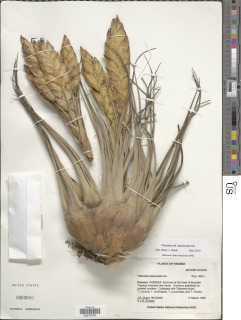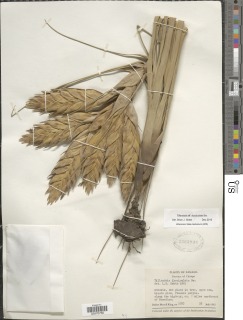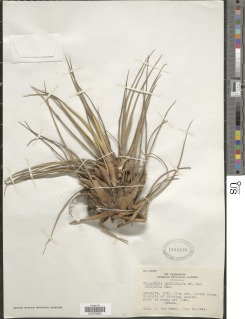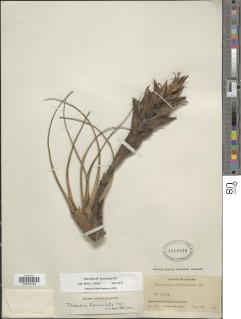

|
|
|
|
Family: Bromeliaceae
Giant Airplant
|
Like the typical variety, except the spikes to 20 cm long, only slightly flattened. Chickering 63. Collected once on BCI, but not seen in recent years. Seasonality unknown, but probably like that of the typical variety. Epiphyte, 20-100 cm tall (usually less than 60 cm), with 1 to several stems. Leaves rosulate, 2-3 cm broad above the ovate sheath, narrowed to 1 cm or less for most of its length, often red to purple near base, sometimes also apically, gradually narrowed to a sharp point, mostly less than 40 cm long, finely lepidote, the lower ones spreading, the upper ones +/- erect, narrower, and merging with scape bracts. Scape bracts gradually tapered to acicular apex; inflorescences simple or digitate; spikes flattened, reddish- to greenish-yellow, mostly 12-18 cm long, to 3.5 cm broad; floral bracts acute, strongly keeled near apex, coriaceous; sepals linear-lanceolate, ca 3.5 cm long, shorter than bracts; petals ca 7 cm long, slender, violet above middle; stamens 6, exserted, violet above middle, 3 of them long and equaling style, the other 3 somewhat shorter; style to ca 8 cm long with the 3 bristly stigmas somewhat twisted together; ovary superior. Capsules 3.5-4 cm long, the 3 valves twisting and spreading widely at maturity, one remaining in the bract, the inner valve surface shiny and black; seeds very numerous, ca 2 cm long, comose, the seminiferous area slender, 2-3 mm long, brown, the coma weakly fused and strongly folded back near middle, the lower half of the strands held together in 3 or more clusters at apex, the outer half of the strands of each cluster spreading widely. Croat 6171, 9523. Uncommon; seen only along the southeast shore, but no doubt occurring on upper branches of trees in the forest as well. Seasonal behavior uncertain. Possibly flowering and fruiting throughout the year, but most flowering collections have been made in January and July at the beginning of the dry and rainy seasons, respectively. Mature fruits have been seen chiefly in the dry season. |

